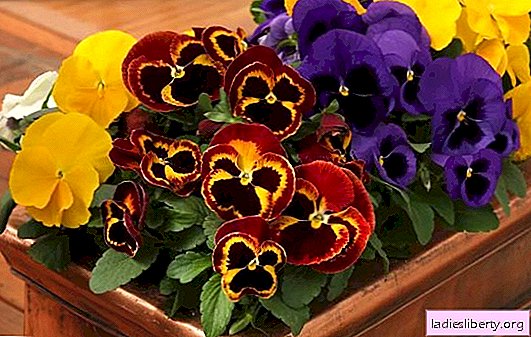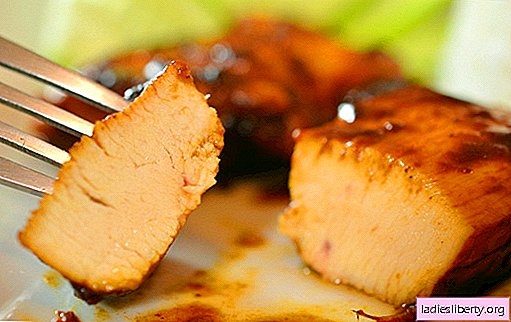
Viola is popularly known as pansies or garden violet. Today, there are many varieties of this plant, among them perennial, biennial and annual flowers. All of them differ in the structure of inflorescences, the color of the petals and the timing of flowering.
You can grow an amazing viola on your own, but beginners often have problems. We will try to describe in detail the whole process from sowing to wintering plants.
Sowing viola seeds and growing seedlings
In regions with a mild climate, seeds are sown in the fall, directly into the open ground. In spring, seedlings are thinned out or transplanted to a permanent place. But the residents of the central and northern parts were less fortunate; they have to cultivate seedlings. The whole process is simple, as it seems at first glance, but has its own secrets.
Instructions for successfully growing seedlings of viola from seeds with a photo:
1. Fill the containers with light soil, moisten it well and make grooves.

2. Lay the seeds in the grooves, sprinkle with a thin layer of soil.

3. Cover the plantings with glass and put them in a cool place to germinate.
Soil for seedlings, choose light, moisture-permeable, at the bottom of the containers, make holes for the stack of excess fluid. The substrate for violets from the store is well suited, it has the right composition and acidity. Choose seeds fresher, although they retain germination for two years, but the old sprout tight. It is best to soak the seeds before planting in a solution of Epina or Zircon. Dilute the drug, as stated in the instructions, and place the seeds there for a day. For germination, the seeds do not need a high temperature, optimally +15 ° C.
If you did everything according to the instructions, the shoots will appear in 10 days. Gradually remove the glass so that the seedlings do not lock up, transfer the container to a room where the temperature does not rise above +10 ° С. Protect seedlings from direct sunlight, it is better to put it on the east or west side.
Advice! If you want to see the flowering viola this year, then start sowing seeds in February. But without re-enlightenment, the Sentsa will stretch. The plant will bloom with the first summer months.
Dates of sowing viola seeds
The flowering period depends on the timing of sowing. If the seeds for seedlings are sown from August to September, then the bushes will bloom in early April. Winters seedlings at home. If the weather is favorable, then it can be planted for wintering in the garden.
To enjoy the autumn bloom of violets, the seeds are sown from May to June. You can immediately close them in open ground. But this method is only suitable for regions with a warm climate. If frost starts early, then flowering can not wait.
Viola seedlings care: picking, top dressing, watering requirements
Care for seedlings of garden violets consists in proper watering, top dressing and picking. Let us dwell on each item.
Watering seedlings
Viola seedlings grown from seeds are very tender, as can be seen in the photo. Therefore, it must be watered extremely carefully. The soil is moistened with a syringe or syringe. You can’t pour water from above, as the seedlings will grow weaker and may no longer rise.

The plant prefers moist soil, but you should not be zealous with watering. In conditions of high humidity of the soil and air, an insidious disease - the "black leg" develops. To save tender seedlings is almost impossible.
Viola nutrition
Seedlings are fed twice a month. To do this, use complex mineral fertilizers for flowering plants. For the first time, seedlings are fed at the age of 15 days.
Pikivka and its features
Regarding the pick, the opinions of gardeners differ, so the final decision is yours. According to the rules, seedlings are dived twice. Many are believed that a second time to dive tender seedlings is not necessary. This injures the root system, the plant is stressed. It is enough to plant seedlings in open ground. Even flowering seedlings take root well.
The third opinion is based on generally accepted rules:
• the first time dive seedlings at the age of the second real leaf;
• a second time dive in a month in separate containers.
By the time of the first dive, the seedlings are extended, begin to curl. They need to be deepened to form a compact outlet. The root system will turn out strong, will carry the subsequent pick. Dive plants so that they have enough space for development. During the second dive, plants are planted in separate containers, using the same soil.

Planting viola grown from seeds in open ground
Garden violet prefers bright but cool patches of garden. It does not tolerate stagnation of water at the roots, so the place should be moderately dry. As a rule, a plant is planted in the shade of trees. In the spring, until the leaves bloomed, the viola had enough light. In summer, a dense crown will protect the flower from the bright sun.
The soil for planting should be fertile. It is fertilized with humus or dry bird droppings. This should be done two weeks before landing. There are no special secrets in planting seedlings. A well-sized hole is prepared, the plant is set up and added dropwise. After planting, the viola is watered.
Important! You need to transplant the violet every 3 years, otherwise the inflorescences are smaller. Perennial species are easily propagated by dividing the bush.
Outdoor viola care and plant wintering
The main care for violets comes down to watering, loosening the soil, and top dressing. These standard procedures can be done even by a novice gardener.
Water the violet as needed. Her root system is small, so there is enough natural rainfall. If the summer turned out to be hot, then the soil is moistened regularly. The soil around the bushes is maintained in a loose state, weeds are removed.
Fertilizers for violets do once a month. Ammonium nitrate and superphosphate are used. During flowering, they monitor seed boxes, remove unnecessary ones in time. If this is not done, then the decorativeness of the plant will suffer.
The perennial viola overwinter in the open ground. It easily tolerates a drop in temperature to -30 ° C with minimal shelter. In autumn, the bushes are sprinkled with dry foliage.
Annual bushes after flowering are removed. The two-year-old viola carries the first winter in the garden. Color for next year. In the second autumn, seeds are collected from it and removed.
Problems When Growing Viola From Seeds
Beginners have problems at the stage of growing seedlings. Let us describe some of them and solutions:
• Seeds do not germinate or rarely germinate - old seeds, temperature conditions are violated, seeds are sown too deep. Before planting the seeds are treated, keep to the optimum temperature.
• Seedlings are thin, lay down - seedlings are stretched, she lacks lighting. Move containers to a lighter place, organize backlighting.
• Shoots faded as soon as the glass was removed - insufficient air humidity. Glass is removed for several hours, time is gradually increased, and then removed completely.
Stick to all the recommendations that are given in this article, then your viola will surely please flowering.











